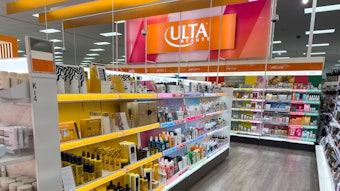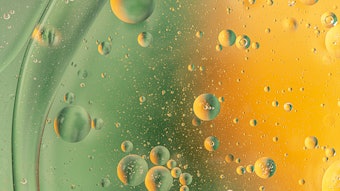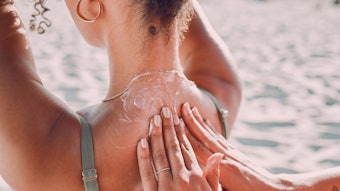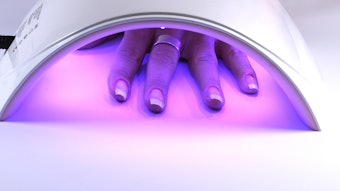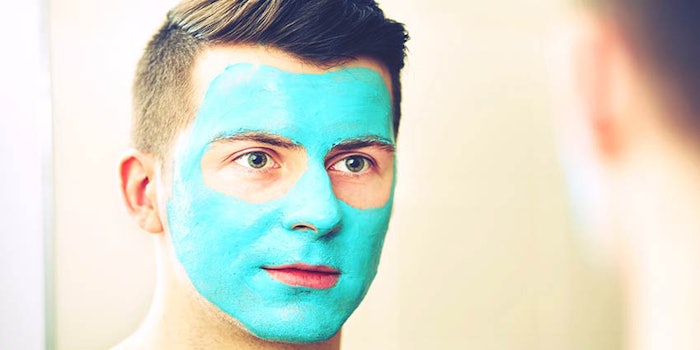
The relationship between brands and suppliers has never been stronger—and for good reason. In today’s environment of rapid innovation, ingredient suppliers are producing new active and functional ingredients, as well as re-leveraging existing technologies for new applications, in order to help brands tell better stories to their consumers.
In addition to the use of demos to offer proof-of-concept, suppliers are conducting lifecycle, sustainability and safety analyses on their ingredients and operations in order to reassure wary consumers and enhance the eco-ethical positioning of formulations and products. All of this innovation is driven by one thing: consumer insights.
In the beauty and personal care space, formulators and brands have sought to create new and interesting textures in products to give consumers an enhanced level of engagement.
Recently, Kunal Kumar, Ph.D., Evonik’s marketing manager, personal care, North America, spoke with Global Cosmetic Industry about the ways in which consumer behaviors and expectations are shifting around the world and how those shifts are impacting technology and products.
1. Experiential Products
Since the last recession, consumers have increasingly focused on experiences over the accumulation of things. Brands, suppliers and technology companies have taken notice, leading to the prominence of haptics, or “the science of applying touch (tactile) sensation and control to interaction with computer applications,” according to TechTarget.
In the beauty and personal care space, formulators and brands have sought to create new and interesting textures in products to give consumers an enhanced level of engagement. Novel textures, often inspired by the Asian market, include ice cream and mouse concepts that provide an extra emotional tie to products.
In the age of the internet and social media, trends spread faster and wider than ever.
These innovations create consumer interest, offer newness and fun, drive loyalty and provide a means of enjoying a beauty regimen.
Evonik has created a number of texture-centric demos, including the Shape Memory W/O Gel, which boasts a self-leveling ability to give the consumer the “impression of a ‘fresh start’ before each use,” according to the company. Its transformative Magic Cream to Milk skin care concept uses milk-like droplets that can break on the skin to unleash moisturizing and brightening benefits.
The company has also developed a Luxurious Whipped Cream, which has a creamy texture and soft skin feel upon application, as well as a Transformation Cooling Balm, which has a solid-like consistency and perceived cooling effect upon application.
2. Borderless Beauty
In the age of the internet and social media, trends spread faster and wider than ever. But that doesn’t mean that beauty concepts have homogenized, said Kumar. Brands must take global trends and manifest them locally, and be aware of which categories lead in each region. For instance, hair care comprises a far bigger portion of the market in Latin America and Africa, compared to North America, while UV-defense has the strongest demand in Asia and Europe.
The popularity of sleeping mask formats in Asia has created new demand in Europe and North America.
Texture is also culture-specific. As brands draw inspiration from K-beauty and other Asian trends, they’re employing transformative textures that offer multiple sensory stages, such as a serum that turns into an oil. However, Kumar noted that preferences between light and rich formulations depend upon the region.
For instance, North American and Asian consumers favor lighter formulations and don’t care for products that leave behind a waxy film. Part of this is due to climate, Kumar said. In Europe, meanwhile, heavier, richer sensations are preferred, perhaps due to the cold.
Understanding these differences can greatly enhance brand-building and marketing success. Perhaps no region has been considered a greater trend influencer in recent years than Asia. Kumar noted that the region has experienced rising demand for night masks that offer overnight rejuvenation.
The popularity of sleeping mask formats in Asia has created new demand in Europe and North America. Asian consumers are also seeking out masks in peel-off, wash-off and hydrating leave-on formats, as well as products that offer whitening, anti-aging and skin radiance.
There remain opportunities to entice U.S. women toward multi-step regimens comprising lotions, toners, essences and serums, as well as for masks for different occasions, specific parts of the face and for overnight treatments.
In the United States, women are looking for products that offer a “detox” effect, as well as multifunctional beauty such as skin care-makeup bridge products. To that end, Evonik has developed a demo formulation, “Brilliant Tone-up Cream,” which offers moisturization and skin tone enhancement.
In addition, U.S. consumers are attracted to beauty regimens but are generally overwhelmed by the number of options. Still, said Kumar, there remain opportunities to entice U.S. women toward multi-step regimens comprising lotions, toners, essences and serums, as well as for masks for different occasions, specific parts of the face and for overnight treatments.
Kumar noted that overnight products offer formulators and brands new opportunities, particularly with sleeping masks and creams, wake-up creams, etc. These can be produced using nature-identical or skin-identical chemistry for bath, body, face (as seen with Evonik’s demo Restoring Sleeping Cream) and fragrance.
3. Athleisure Beauty Indoors and Out
North American consumers take part in extensive indoor and outdoor exercise, creating two types of athleisure beauty needs. Evonik’s research found that the needs of the athletic beauty consumer included sweat and malodor control, extra moisture/care and convenience.
Anti-pollutant/environmental aggressor protection claims have centered primarily in skin care and hair care.
In response, it developed several concept products, including an ACH-free dry and light deodorant stick, after-sun energizing and nourishing spray, refreshing power wipe and all-in-1 hair recharge for sport.
Evonik’s exercise-proof foundation was created to allow active consumers to be selfie-ready post workout. The smudge-proof formulation has a light skin feel, according to the company.
4. Against the Elements
Protection against elements—including UV exposure, indoor and outdoor air pollution, ambient dust, and blue light from screens—has been an increasing area of innovation. These environmental aggressors can lead to skin imperfections such as diminished radiance, pigmentation, dry skin and the appearance of fine wrinkles.
Anti-pollutant/environmental aggressor protection claims have centered primarily in skin care and hair care. According to data provided by Kumar, the United States, United Kingdom, France and Germany have been dominated by products offering face protection.
Anti-pollution and anti-environmental aggressor innovation has led to new opportunities in intensive hydration masks and overnight sleep masks.
5. Telling a Better Sustainability Story
From free-from to natural claims and Ecocert to COSMOS, formulators and brands are addressing an unprecedented number of standards. On a practical level, product developers are faced with challenges such as silicone-free primers, palm-free supply chains and animal-testing-free products.
While there is no set definition of sustainability for ingredients or products, consumers are increasingly aware of products’ sustainability profiles. Evonik has leveraged its CAREtain platform to profile ingredients, processes and applications through a sustainability lens and to conduct lifecycle assessments.
While there is no set definition of sustainability for ingredients or products, consumers are increasingly aware of products’ sustainability profiles.
The company’s assessments evaluate the natural status, efficiency and multifunctionality of materials, as well as aspects such as cold processing and renewability. These analyses offer a 360-degree view of sustainability. Products that point to Evonik’s sustainable future include Ceramide III B, a skin-identical ceramide made from renewable ingredients, which can offer long-term protection and repair for sensitive and dry skin, while also restoring damaged hair and protecting it from chemical and UV damage.
The company’s natural-based Tegosoft AC is produced by a sustainable enzymatic process and can be used in facial and body care emulsions, gels and serums, natural cosmetic products, baby care, sprayable emulsions, antiperspirants/deodorants and color cosmetics.
Evonik’s Tego Care PBS 6, meanwhile, is a natural emulsifier based on renewable sources, offering stabilization properties in difficult systems. Each innovation, said Kumar, allows the supplier and its customers to tell a more compelling sustainability story.
6. Opportunities in Male Grooming, Tattoos and More
Men are adding new products to their personal care regimens, said Kumar, with a particular focus on the face, including anti-aging, beard care and sensitive skin solutions. Face masks are on the rise in the male category, though the segment leaders currently include facial cleansers and moisturizers, body moisturizers, sun protection lotions, body scrubs, facial scrubs and anti-aging serums.
The company has created concepts to protect and nurture the skin before and after tattooing, including the Recovery Soft Cream.
Kumar noted that there are opportunities for brands to offer whole body cleansers and shower shave gels, all-day protection, eye care and products for different skin types.
Evonik has also introduced tattoo care innovations to address the roughly 60 million Europeans with tattoos, as well as the 20% of the U.S. population that has gotten “inked up.”
The company has created concepts to protect and nurture the skin before and after tattooing, including the Recovery Soft Cream, which supports the restoration of the skin’s protective barrier, the Daily O/W Body Lotion SPF 15, which protects colors from UV-related fading, a Tattoo Sharpening Roller to boost luminosity of the skin and pigments, as well as Camouflage Makeup to conceal one’s tattoo when necessary.
Future Innovation Targets
Looking ahead, Kumar noted that the beauty and personal care industry can capture emerging opportunities in:
- Sunscreen for different skin tones
- Skin care for various ethnicities
- Products that counteract environmental stress factors
- Dermocosmetics
- Halal cosmetics
- Beauty routines built for performance around the clock




